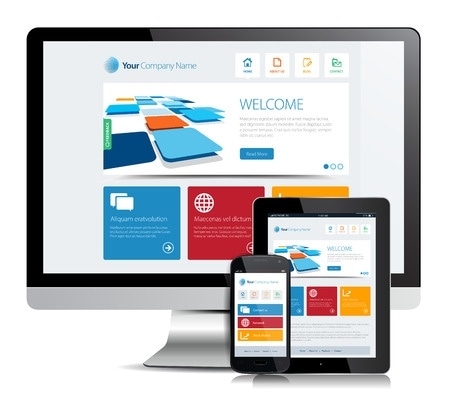A professional, well-built small business website is one of the single most valuable tools you can employ. It’s your face to the world that helps you reach far more people than a brick-and-mortar location alone ever could. Not only the people who are looking for your business specifically, but also those who don’t even know that they need you…yet!
Unless the business that you started happens to be as a website designer, chances are you need a little help getting things off the ground.
Regardless of how prospective customers hear about your particular enterprise, many will check your small business website before deciding to purchase. In some ways, a website has become an electronic “business card.” And if you don’t have one, your business may not be seen as legitimate.
Having a well-designed website can also be an effective way to market your business and compete with larger brands in your industry. With plenty of pricing options, it’s never been easier for budget-conscious companies to make themselves look as professional and polished as the “big guys.” Here’s a few things to keep in mind and plan out before you start a new website.
What is your websites primary purpose?
[/vc_column][/vc_row][vc_row padding_top=”0px” padding_bottom=”0px”][vc_column fade_animation_offset=”45px” width=”2/3″]A business website generally serves as a space to provide general information about your company or a direct platform for e-commerce. If you don’t plan to accept payments through your website, you won’t have as much work to do in setting it up. If you are a retailer or service provider and want to offer your customers the option to pay online, you’ll need to use an external service to receive your payments. Even if you’re a service-based business, you can still include a strong call-to-action on your business’s website. Whether it’s through a quote-request form or a newsletter sign-up, the purpose of your website is to gain more clients, and this should be defined from the start, helping to shape the way your website is structured.
Think about your specific user experience, and the journey the user will go through as they navigate your site. Whatever the fundamental goal of your website is or whatever the focus may be, users should be easily able to achieve it, and the goal itself should be reinforced as users navigate throughout your site.
[/vc_column][vc_column fade_animation_offset=”45px” width=”1/3″]
Choosing a domain name.
Your domain name is one of the most important features of your website. It’s the URL you’ll be sharing with your current and potential clients, and if you want to keep them coming back to your site, you need to make it something memorable. Try to keep it short, and steer clear of abbreviations, acronyms and numbers if possible, to avoid customer confusion.
[/vc_column][/vc_row][vc_row padding_top=”0px” padding_bottom=”0px”][vc_column fade_animation_offset=”45px” width=”1/1″]Creating pages and content
A good small business website consists of more than just a home page. You’ll want to create multiple pages dedicated to different aspects of your business, such as a detailed catalogue of your products or services, or a blog section for company updates. A contact page, your customers’ direct link to you, is one of the most important sections of a website, so make sure you include as much information as you can (phone number, email address and physical location if applicable). It’s also a good idea to include some information about the founding team or staff on an “About” page to help customers put real names and faces to your brand.
If your business doesn’t already have a logo, consider hiring a graphic designer to create one to use on your website, business cards and social media profiles. This will help your clients identify your company quickly and easily on the Web. Some other tips include:
- Be clear about what your business does.
- Place strategic calls to action.
- Automate speed improvements.
- Avoid stock photos.
Advertising your small business website online through social media and search engines
f your business doesn’t already have profiles on Facebook, Twitter and LinkedIn, get them created and include links to these profiles on your small business website. This is the best way to increase your audience reach and to alert customers and clients about what’s going on with your company. Anytime you update your website, post about it on your social media outlets — but balance that out with genuine, non–promotional engagement. If your uncomfortable doing this or just don’t have the time then you can hire a Social Media Manager to make sure engagement with your business is managed and that regular updates are posted on all your social media
[/vc_column][/vc_row][vc_row padding_top=”0px” padding_bottom=”0px”][vc_column fade_animation_offset=”45px” width=”1/1″]Maintaining & updating your small business website
Staying relevant is just as important as being on the Web in the first place, so update your website frequently with blog posts on current industry events, new products and offers, and company news to keep visitors coming back to the site. You should also test your site periodically and make sure that you are using the latest versions of your Web host’s software. If you don’t have time to do this yourself hire a website manager.

Starting a small business website is an investment that will help you to both establish credibility and reach a wider customer base than you ever could through traditional marketing techniques. As long as you keep your website updated with fresh, current content and are quick to address technical issues, you’ll never have to worry about “not existing” to your current and future clients.
[/vc_column][/vc_row][vc_row padding_top=”0px” padding_bottom=”0px”][vc_column fade_animation_offset=”45px” width=”1/1″]Share this Post

